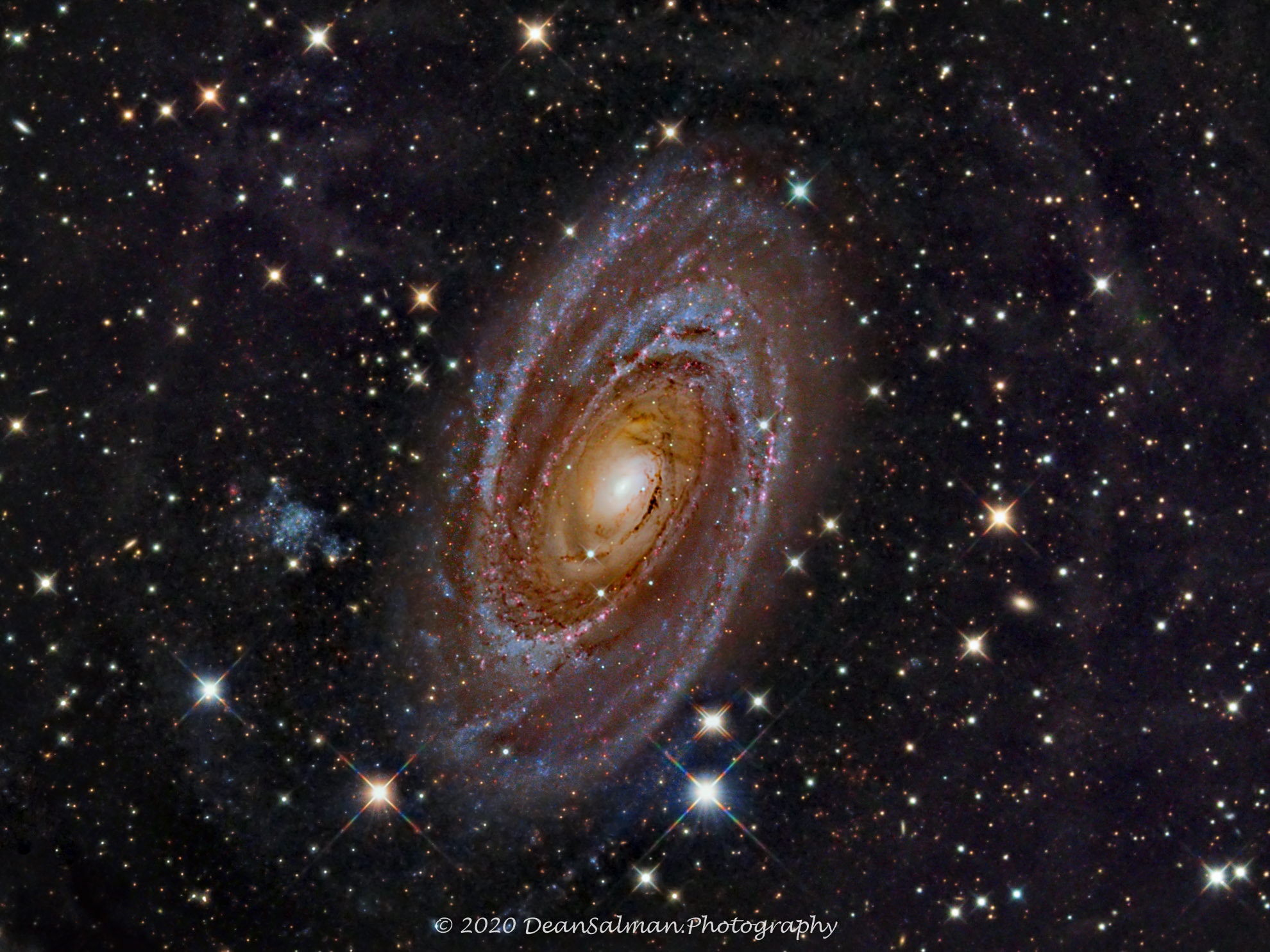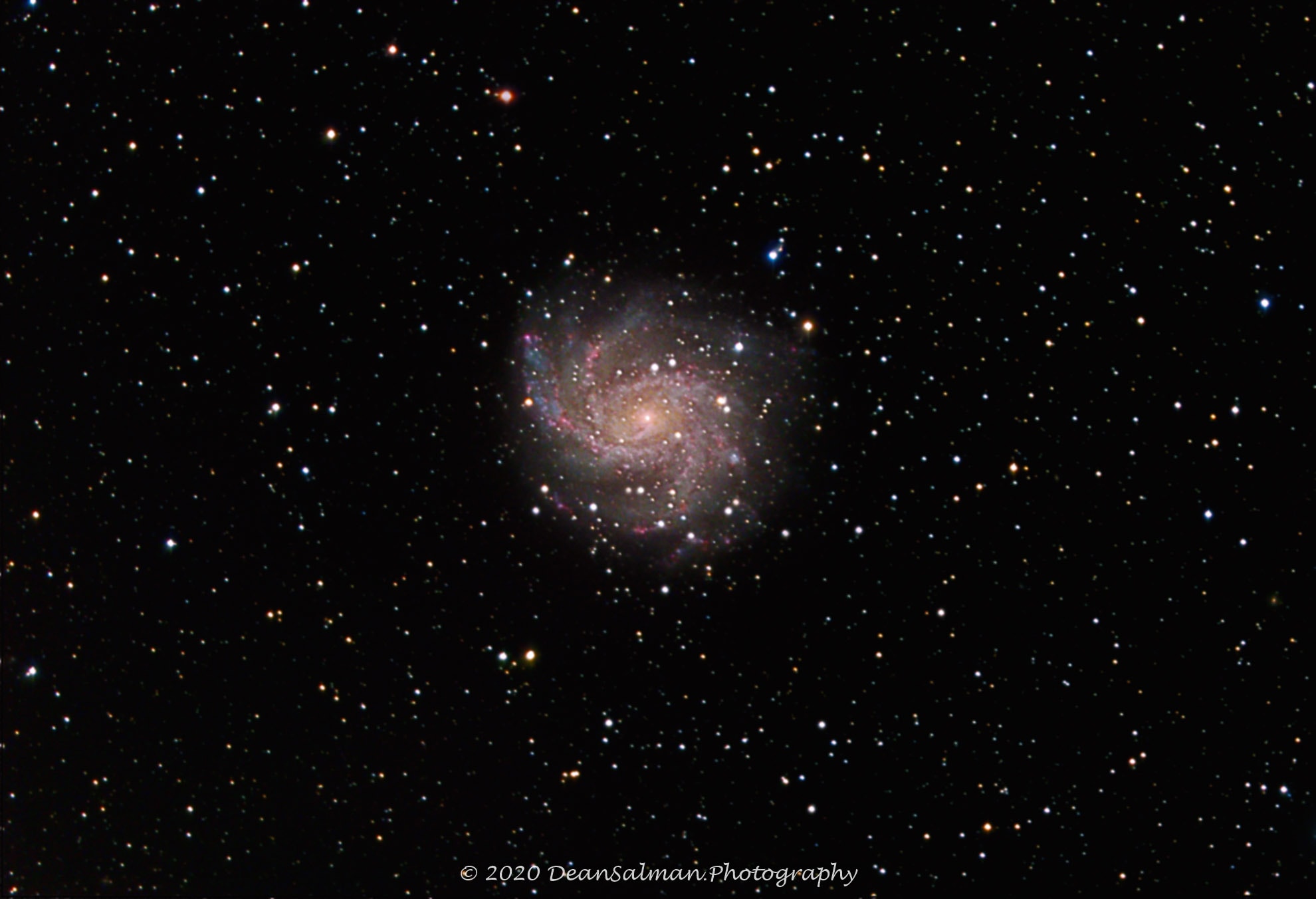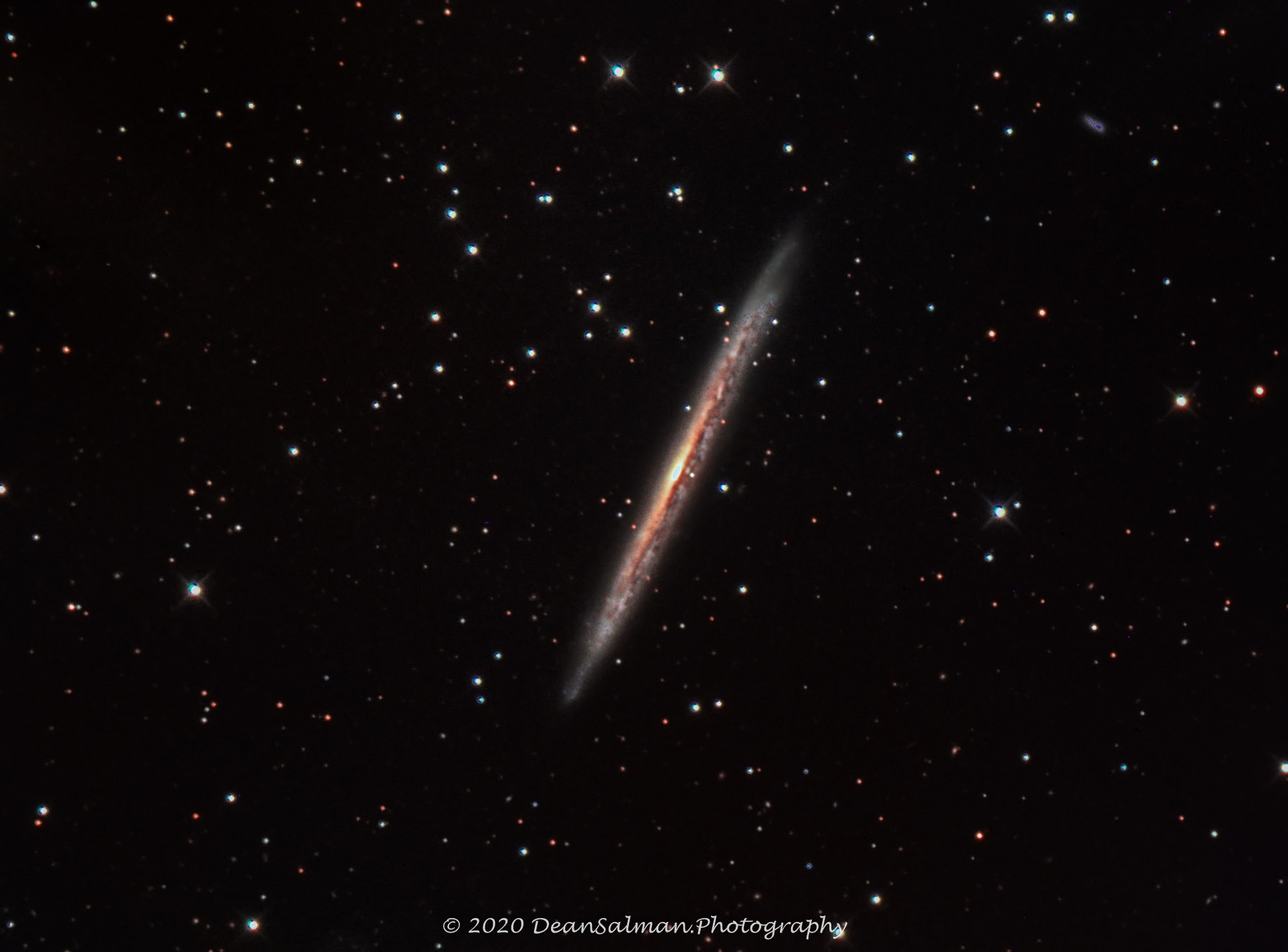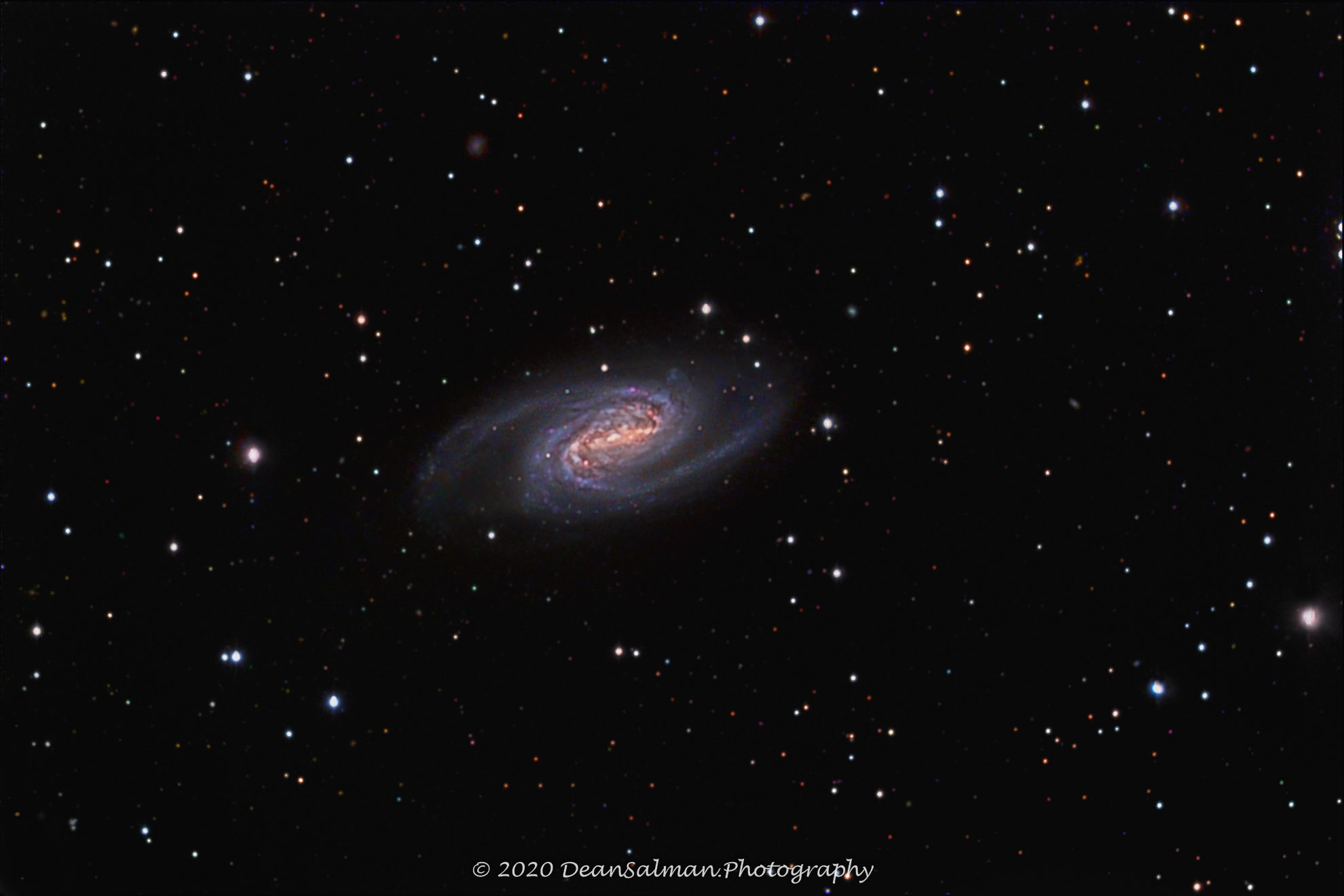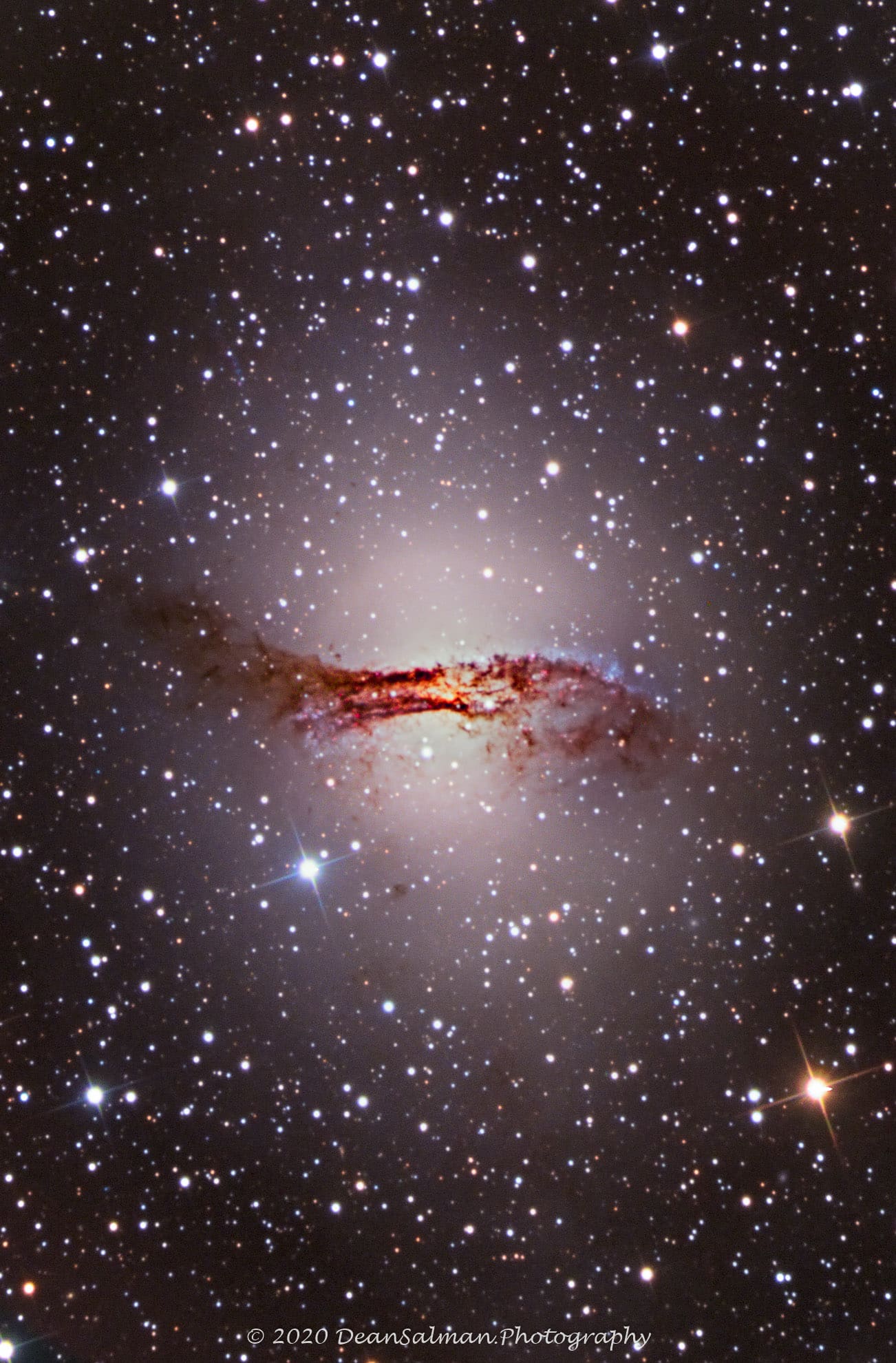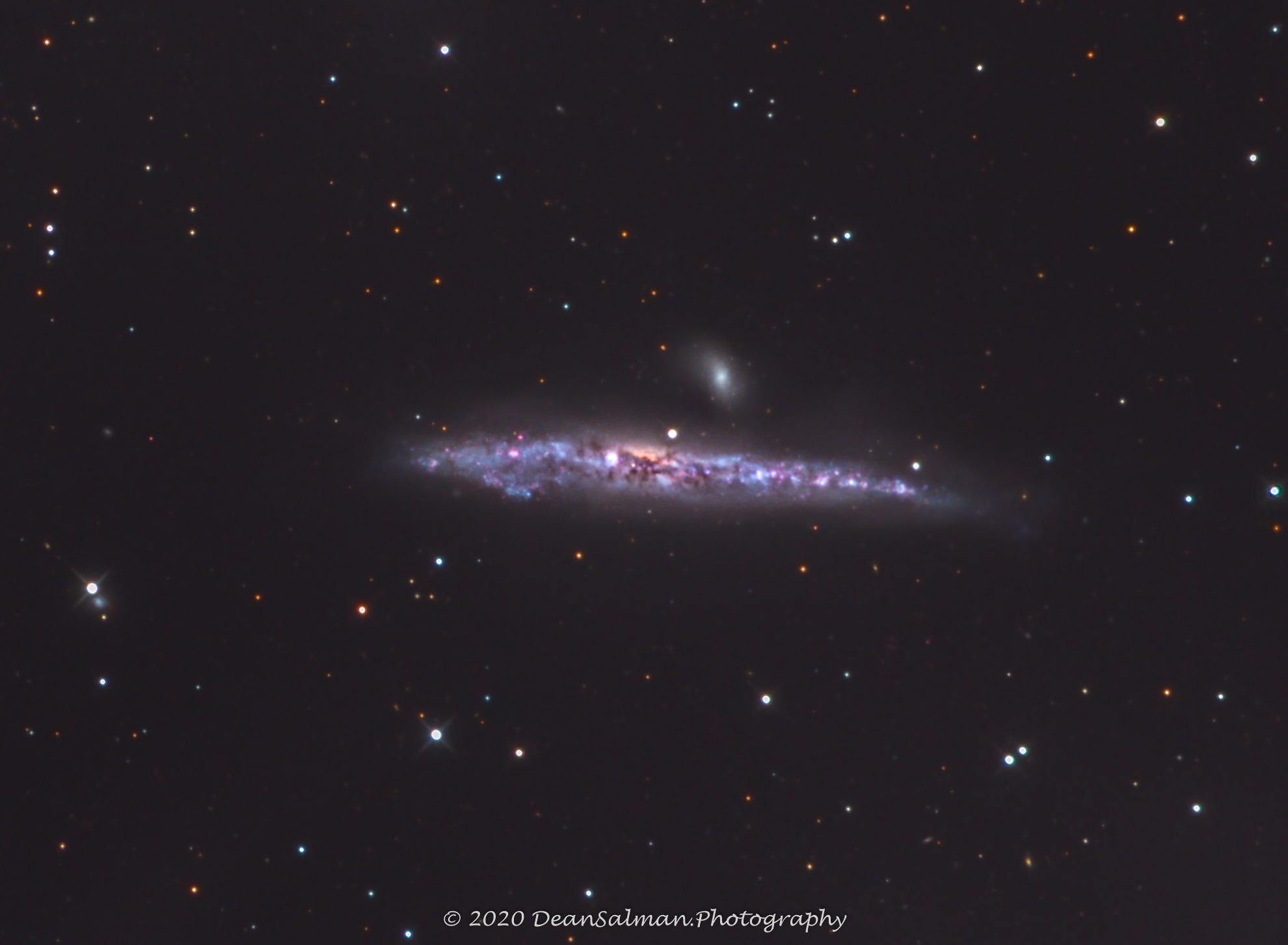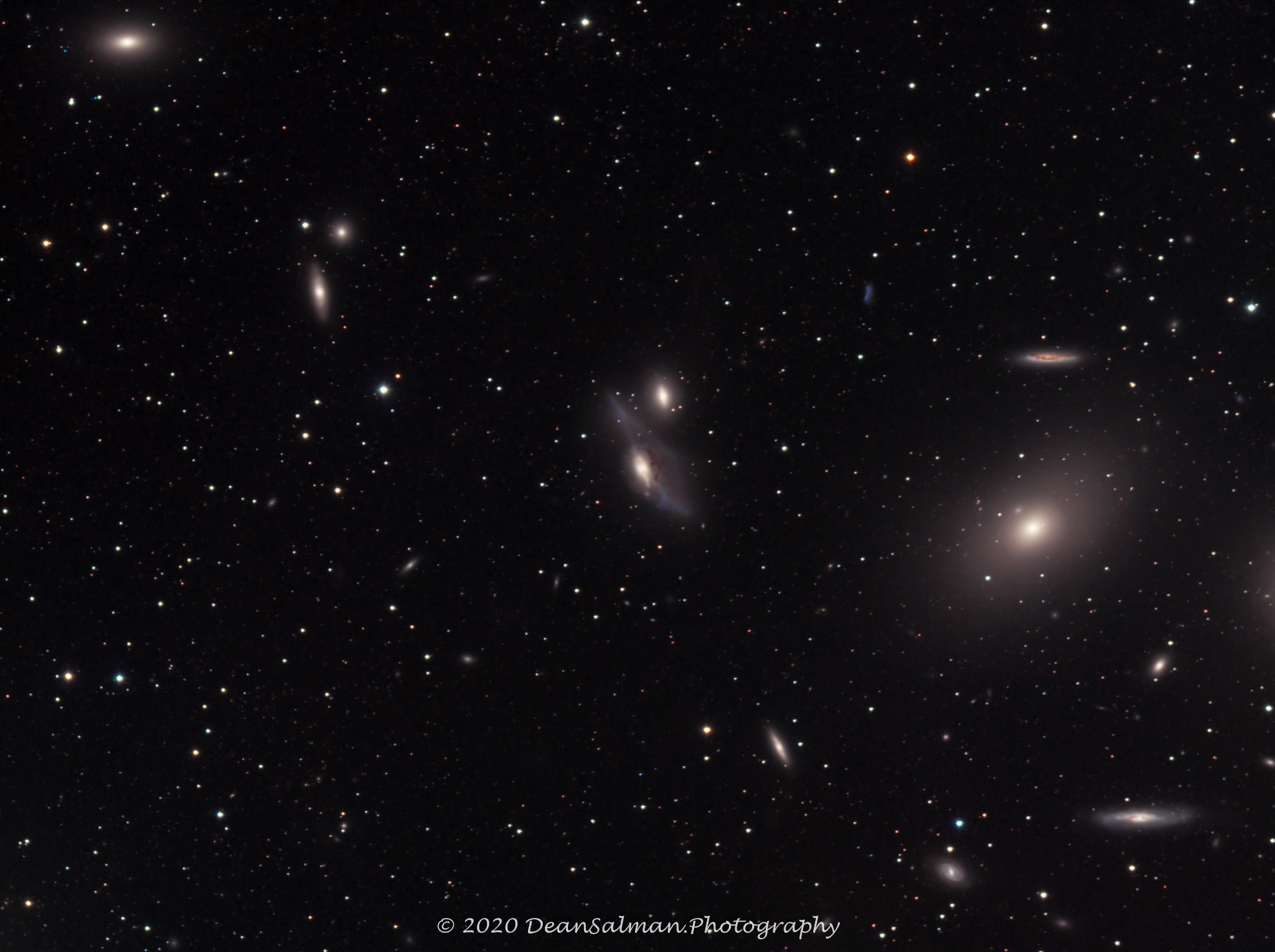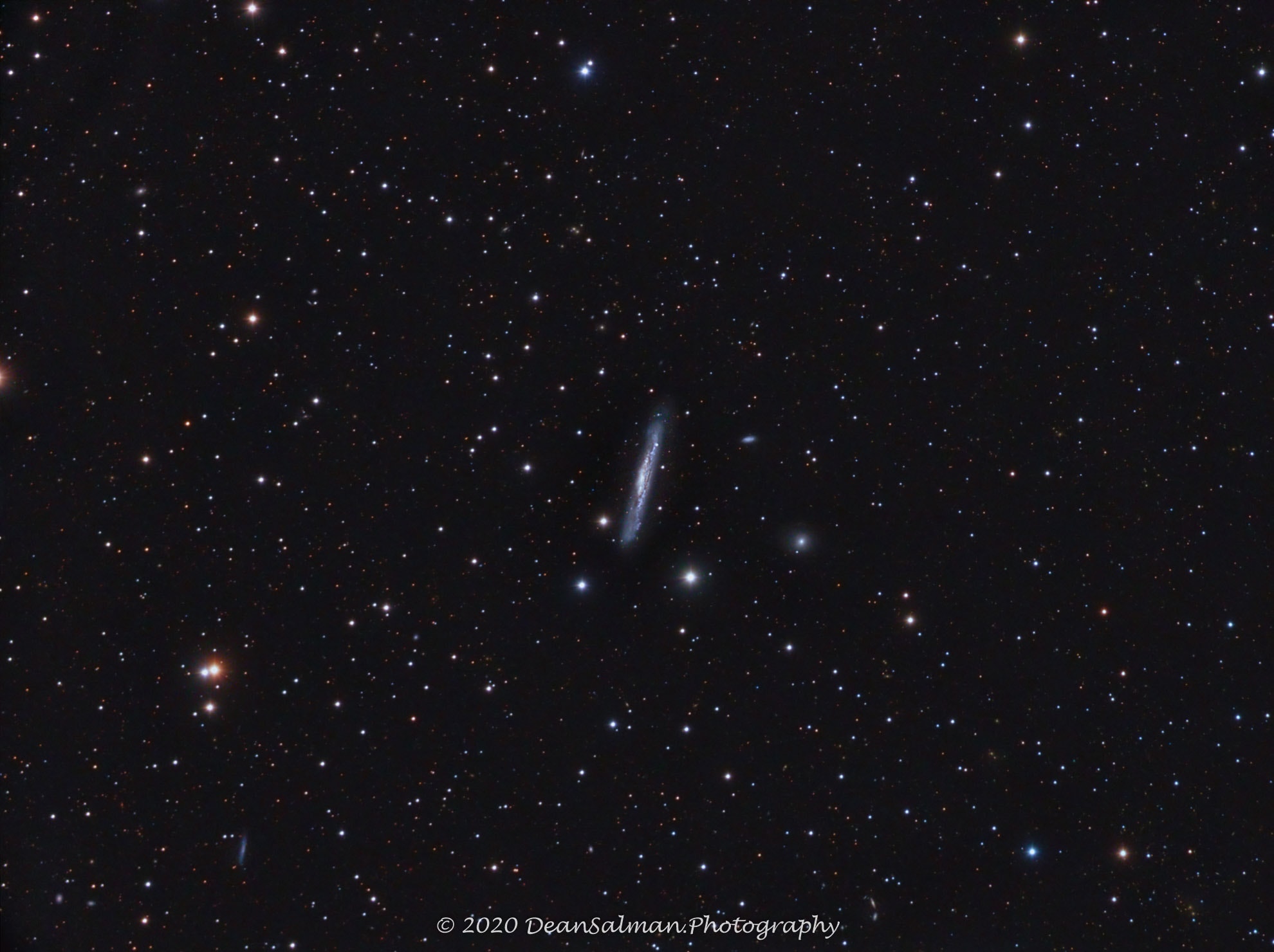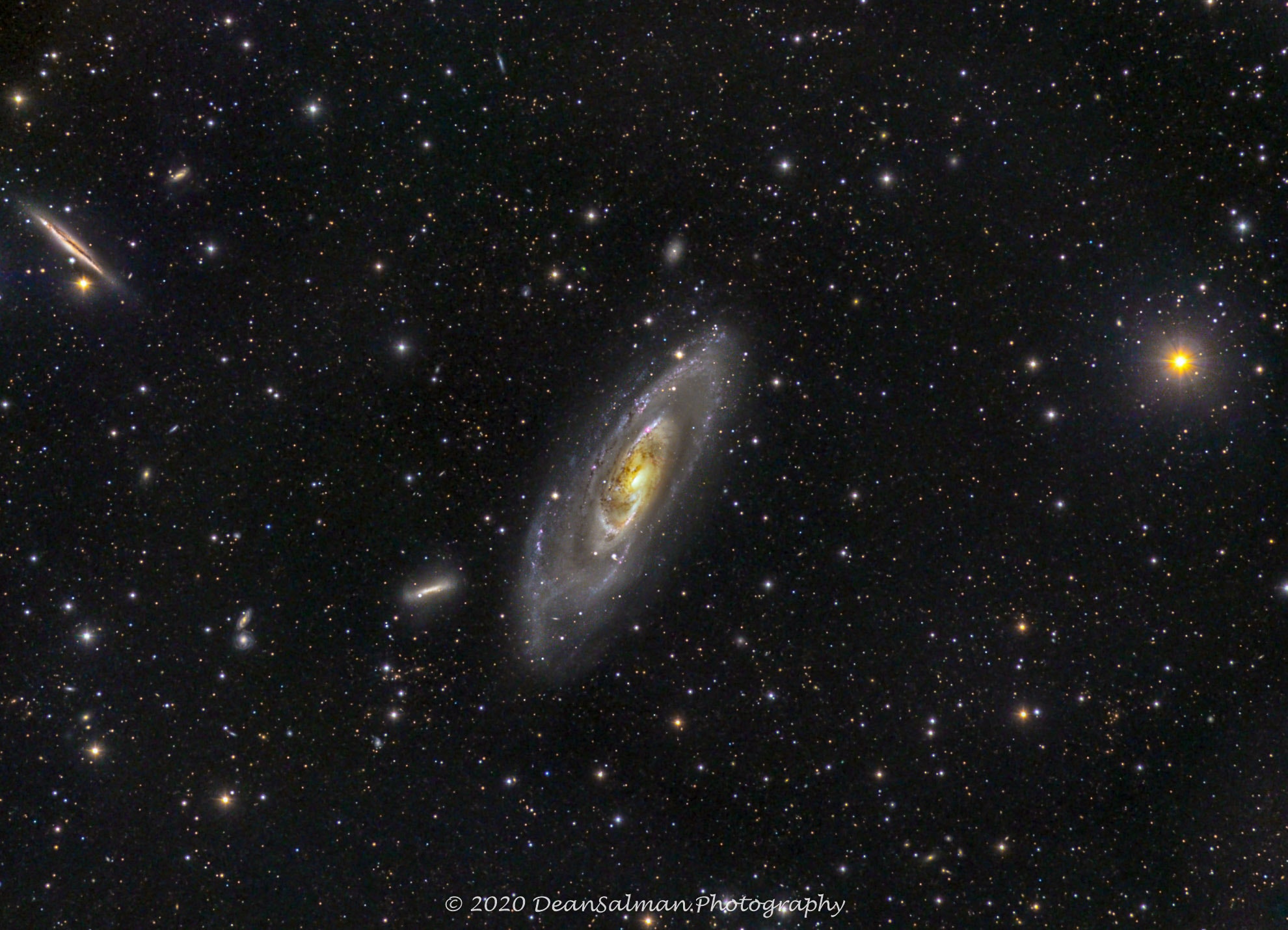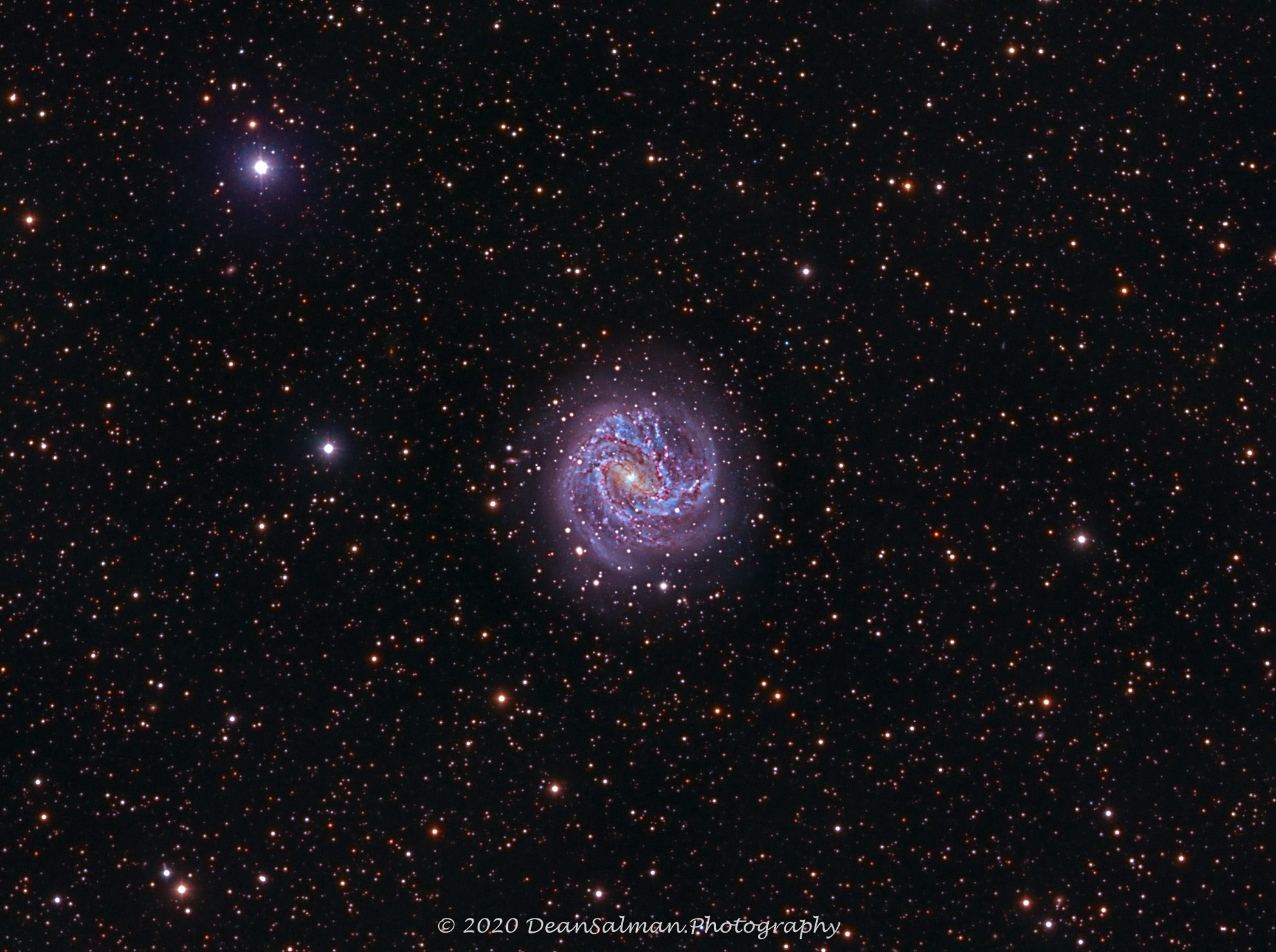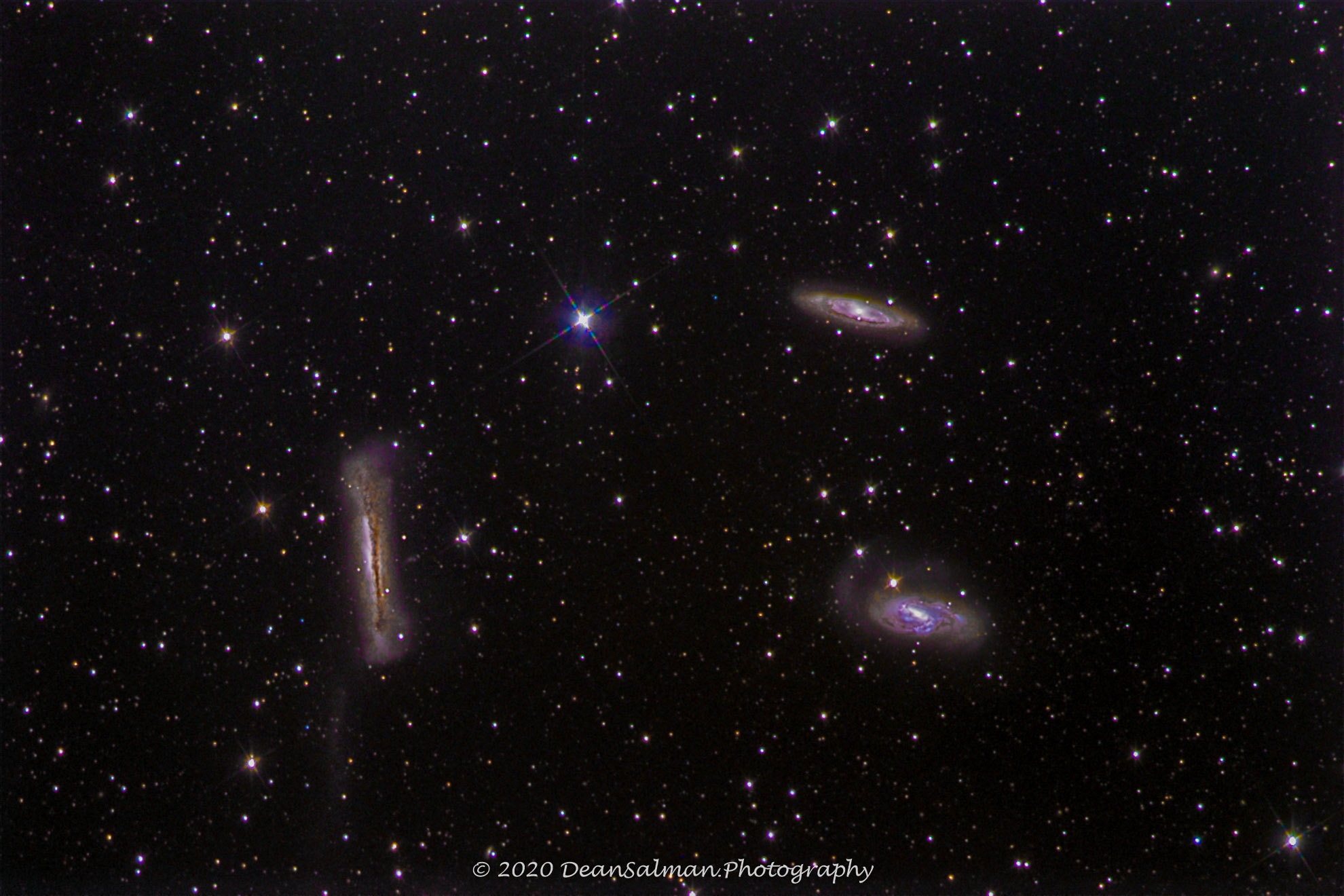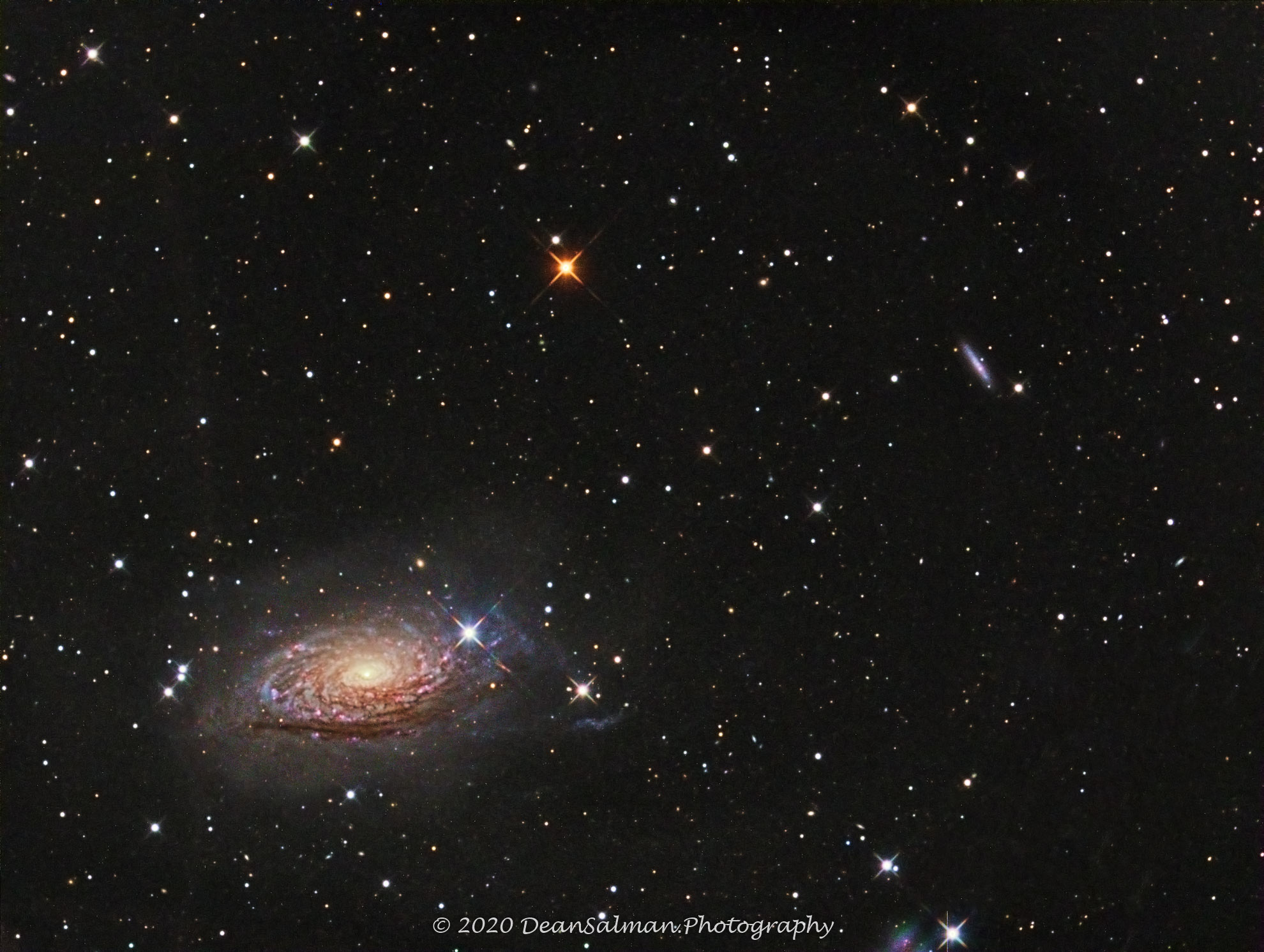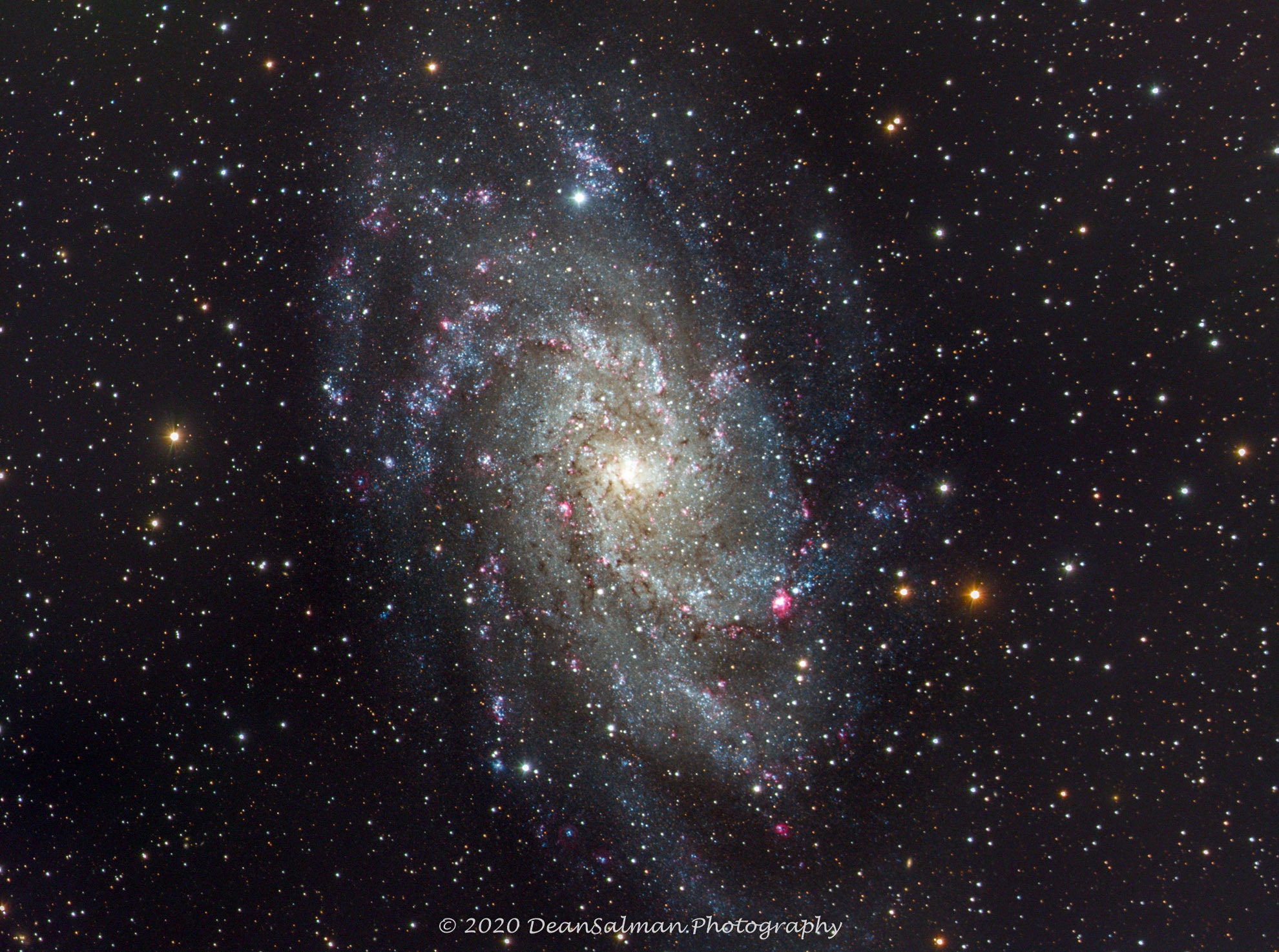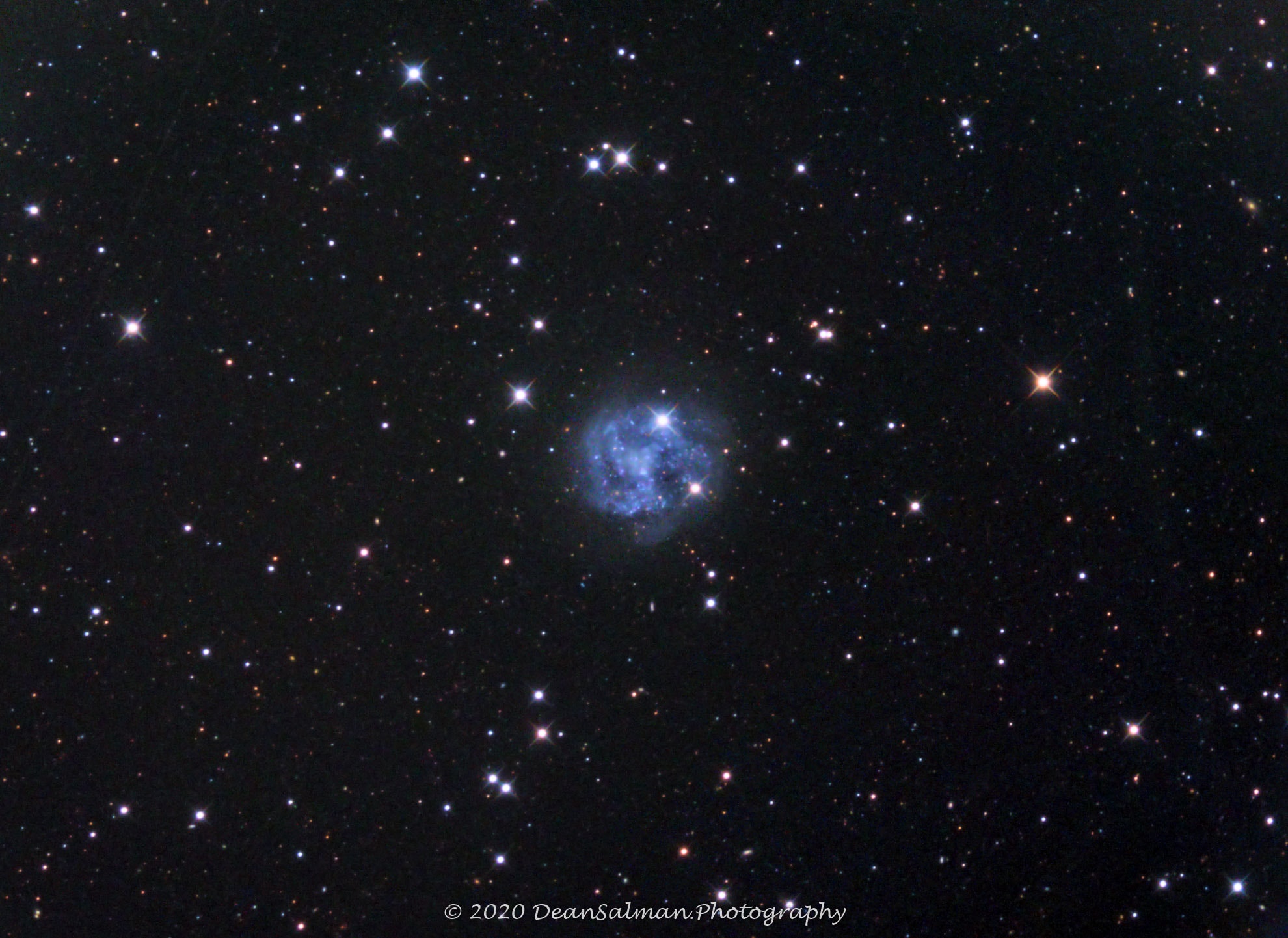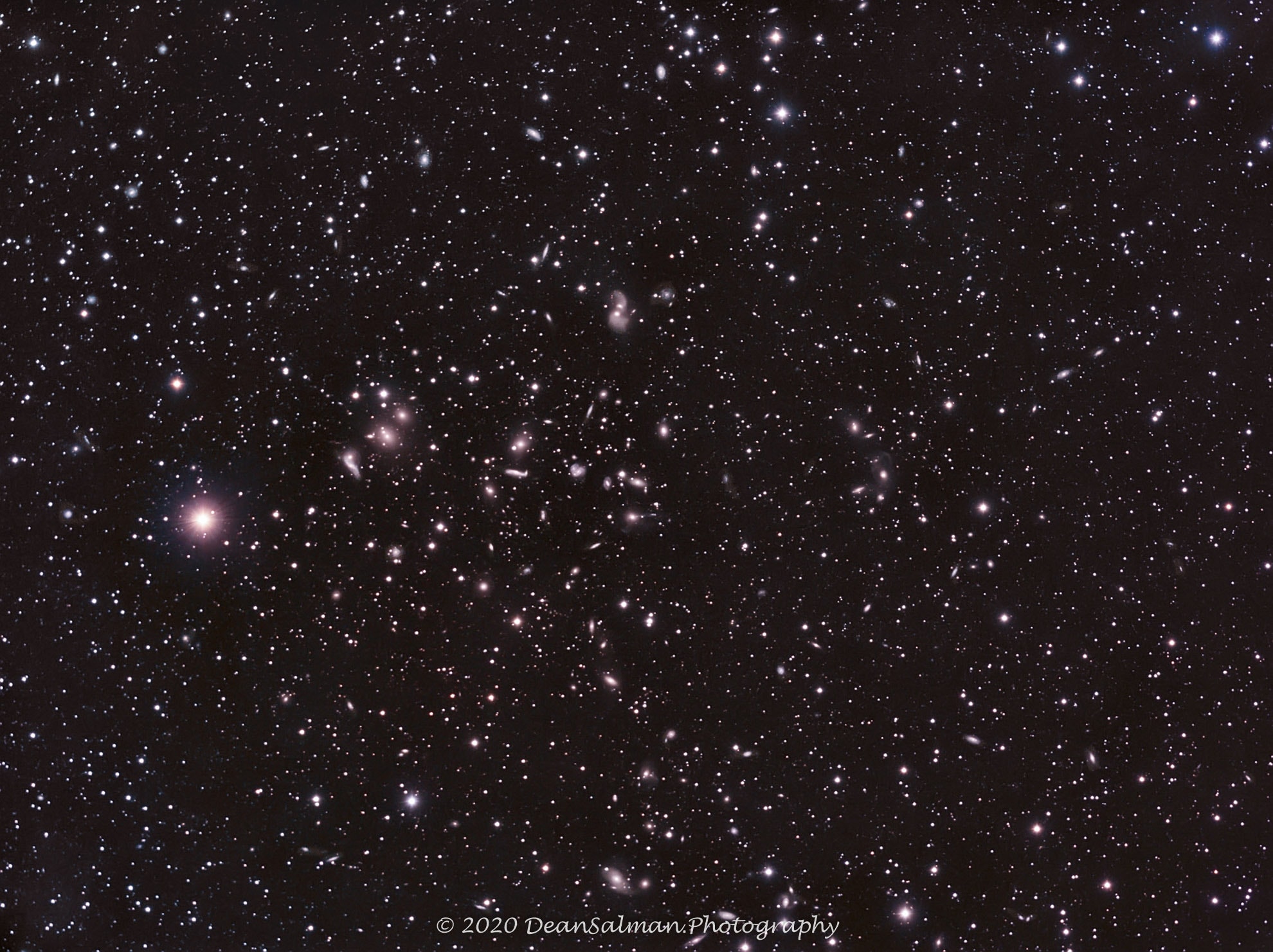Galaxy Photography
Galaxy photography is a popular object to photograph, but it is not my favorite. Galaxies show a lot of structure and there is nice color with these objects. Generally, this kind of photography will require the main telescope, a guide telescope, imaging collecting software, and automation of some kind. I used ACP for automation which connects to MaximDL and FocusMax. ACP moves the telescope to the object, center it, take the exposures, and focus the telescope as needed.
Capturing the images
I usually use exposures of 300 seconds to 600 seconds and take anywhere from 90 minutes to 3 hours of imaging time. This depends how bright the galaxy is and how much interesting detail there is. The color cameras have the advantage of just taking one set of images. Cameras that require color filters also need to take a set of images for each filter. One advantage of using a black and white camera with filters is the quantum efficiency is much better than a color camera.
Post Processing
I used a software package called PixInsight to calibrate the images, align, and stack the images. Then use PixInsight for some post processing once a final image is created, however, I do most of my work on Lightroom Classic, Photoshop, and Photoshop plug-in. Galaxy images vary a lot so there is more time usually needed to post process, however. Part of the reason is the different brightness, structure and size.
Every good gift and every perfect gift is from above, and comes down from the Father of lights, with whom there is no variation or shadow of turning.
James 1:17




